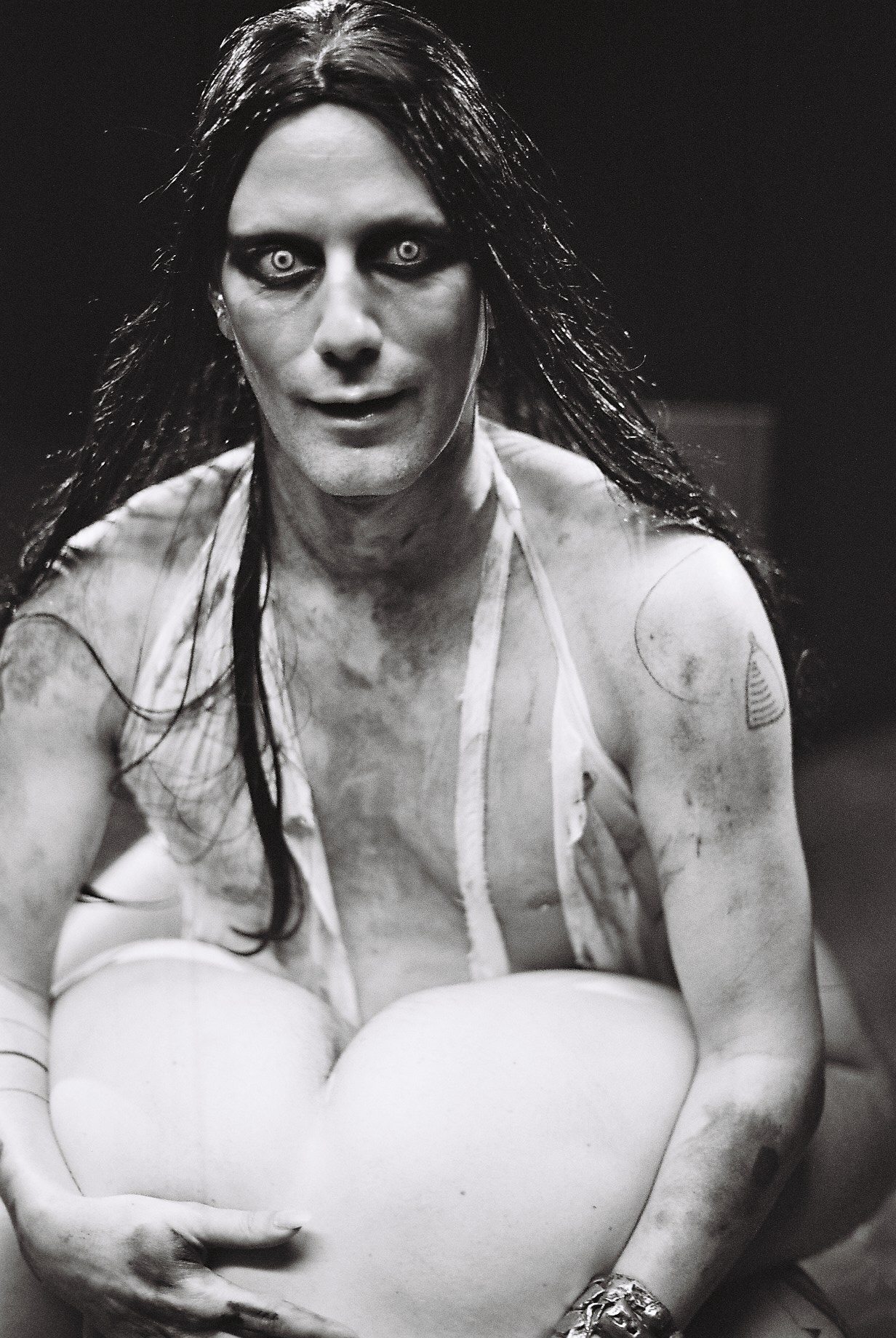From Rags to Rags: RICK OWENS Inside Out
|Carson Chan
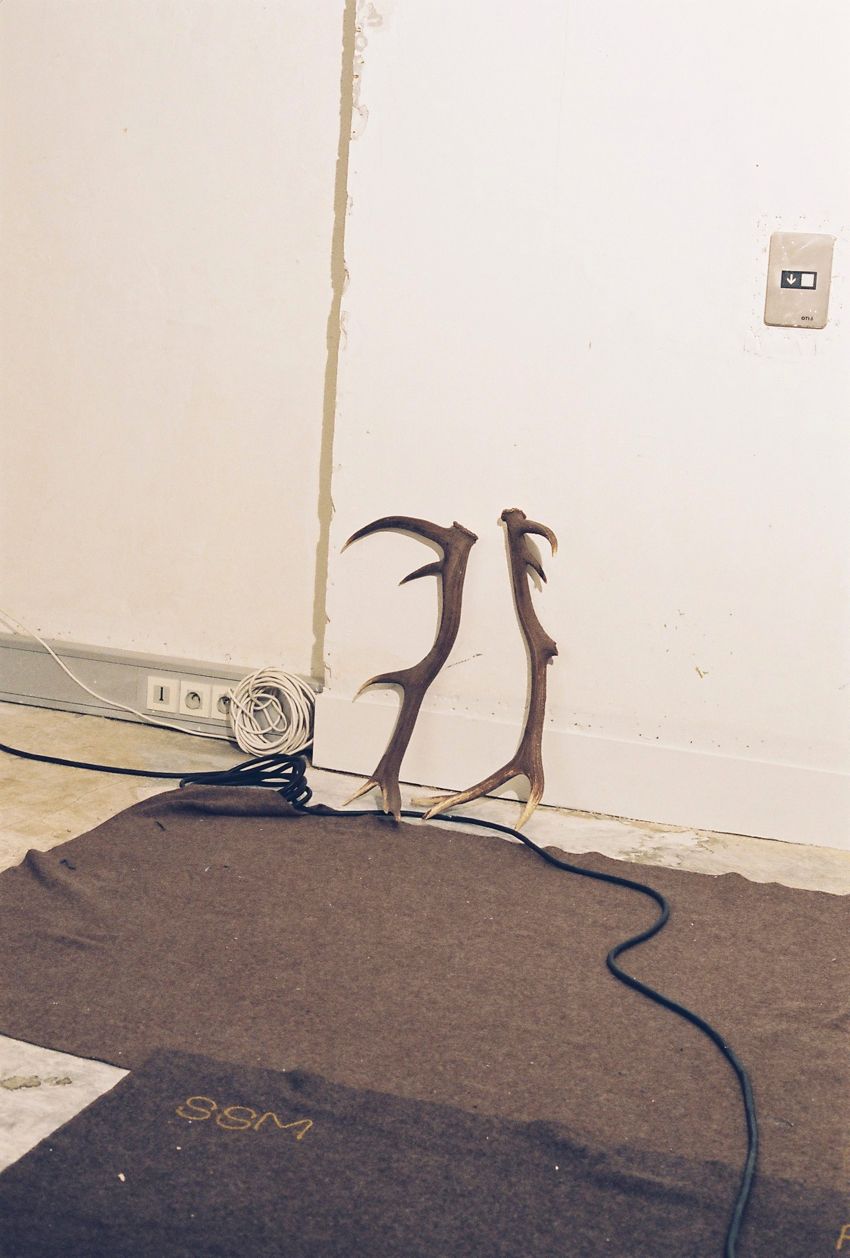
Just two days after the presentation of his fall 2010 collection in Paris this March, I met with designer RICK OWENS (born 1962) for a conversation that started in his studio and ended the next day in his gym. Owens’s studio—whose boundaries blur into his office, showroom, furniture workshop, and apartment, which he shares with his partner of eighteen years, Michèle Lamy—takes up several stories of a Haussmannien townhouse in the upper reaches of the 7ème, on a quiet block south of the Seine. Besides having been the former headquarters of François Mitterrand and his staff, it‘s a space that’s been properly celebrated by the press, from PIN-UP to The Financial Times to the pages of this magazine—two years ago, 032c had Max Farago photograph Lamy’s daughter, nude, in the apartment.
I arrived in the midst of the post-show buying rush, and the complex was populated by a salad of sales attendants, buyers, translators, press liaisons, models, and support staff, all of whom were dressed in Owens’s signature confections: dark drapes, shadowy gauzes, and lop-sided edges—everyday garments that sit well with those who find glamour in the asymmetries and imperfections of life; nothing is held firm, things go out of place. Looking out of the back windows of the studio, one can see the gardens of the French Ministry of Defense, where every few weeks “La Marseillaise” is performed for visiting dignitaries by a uniformed combo. “It’s amazingly charming,” Owens said, pausing to take in the sight of the manicured lawn. Of average height, Owens is built and tanned, and looks kind of like Iggy Pop with a stronger nose and coal-black hair. He acknowledges the seemingly cliché trajectory of his life; a made-for-television tale of a Catholic-school boy raised by conservative parents, who drove 150 miles south to L.A. right after graduating high school to live a reckless and hazy decade of booze and drugs, only to sober up enough by the mid-1990s to unleash a talent for designing affecting and decadent clothes—clothes that would be picked up by Barney’s in New York five years later in 1999, clothes that would win him a National Design Award from the Cooper Hewitt National Design Museum in 2007, and clothes that would command the runways in Paris, his home since 2003.
CARSON CHAN: I heard you have a deep interest in architecture and interior design.
RICK OWENS: I do, but I’m very much a dilettante. I’m not a connoisseur, and I don’t have the memory for all the names and dates. People ask if it’s different to design furniture than clothing, and the answer for me is no. Doesn’t every designer want to design their entire environment, and apply their aesthetic to everything around them? Everyone, if they could, would customize everything around them. I don’t know if I have the talent for that, but I certainly have the desire. In this way, architecture surpasses fashion. It’s totalizing, and once you get to that point, you wouldn’t even want to deal with clothes. Designing clothes is the first step—it’s the baby step towards architecture. Actually, the triangular pattern that I’ve been using for my clothes comes from a façade relief in Berlin, though I don’t remember from which building.
Do you know of Carlo Mollino’s architectural work?
He’s one of my heroes. I’ve looked at his work for years and years. I’ve been to his theater in Turin.
It’s amazing. The plan of the building is modeled after a woman’s torso. What is so fascinating about Mollino is that he seems to have designed buildings—these mirrored palaces—so that he could photograph half-naked women inside them afterwards. The building itself is only a part of his imagination. He furnished these places with chairs that would split open the sitter’s legs.
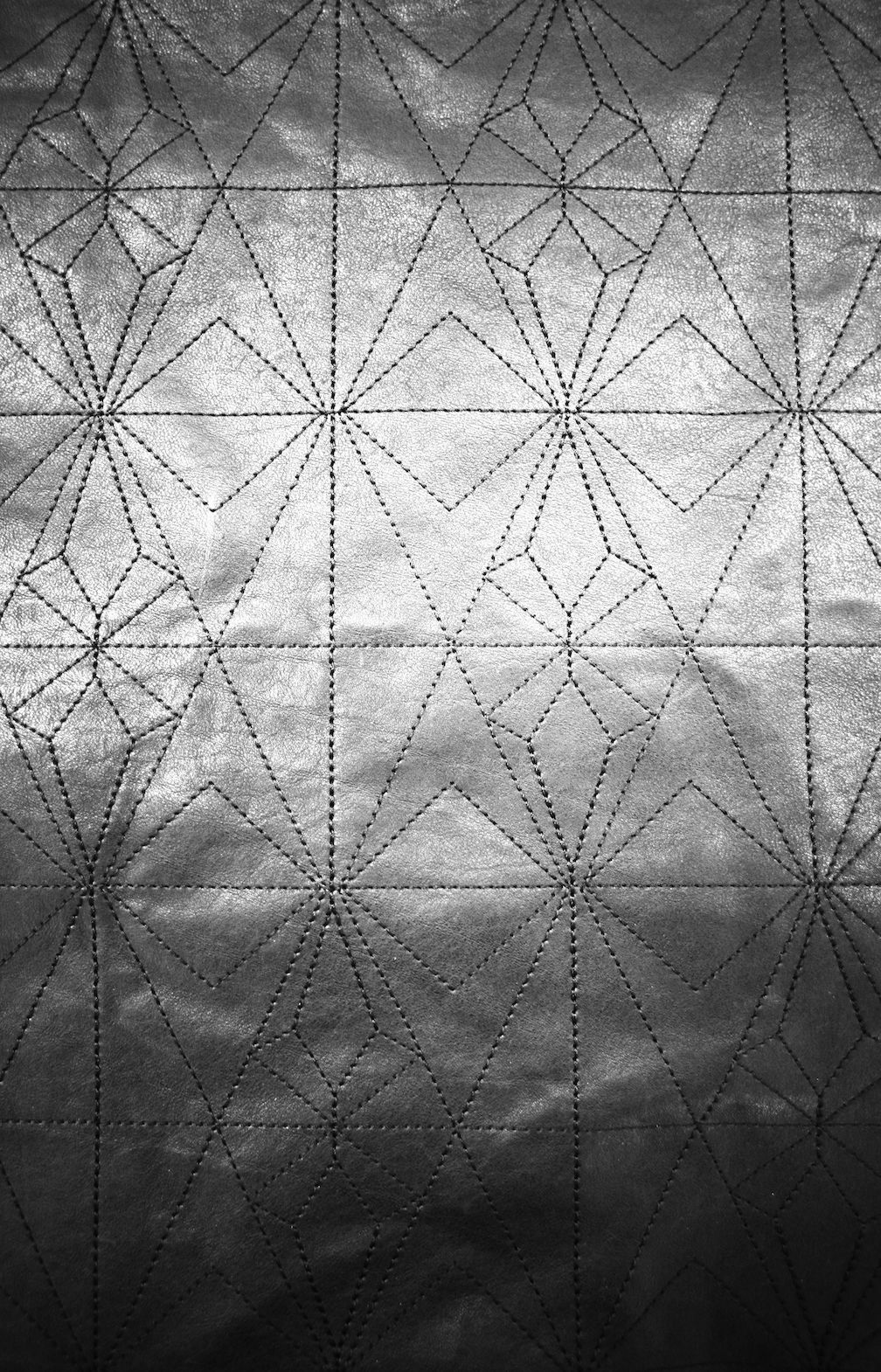
You used to work for a clothing company in Hollywood that produced knock-offs of designer clothes, and I assume that gave you a pretty fundamental education in pattern making. The same learning didn’t happen with your furniture design, right?
No, it was a completely different, do-it-yourself attitude with my furniture. Actually, the clothes were a do-it-yourself thing too. I started making them with all sorts of improvised techniques because I didn’t have the manufacturing capabilities I have now. I had one Mexican sewer in my studio. I didn’t have knitting capabilities. I didn’t have a Rolodex of suppliers. It was all improvised. Having said that, you can’t really start to improvise unless you already have some foundational skills. Artists can’t convincingly abstract unless they’ve had classical training—and I’m not referring to myself as an artist here.
Why not?
Maybe I will on my deathbed. Recently, I was thinking about the differences between approaching art and fashion. I started out going to art school, wanting to become a painter, but I was intimidated by the intellectual intensity that I thought I had to maintain. I didn’t think I could do it. It felt like priesthood—that, or I took it too seriously. Now I think fashion has surpassed art as a way of communicating. Fashion has become more defined as a discipline because there is so much competition out there. At the same time, the audience has grown and become more knowledgeable since I began. Fashion is something that has to speak immediately, to hit you in the gut with something profound, something emotional. It’s a form that has to constantly be of the moment in order to provoke this reaction. A lot of the art I see these days is always ironic, always a wry joke or a superior comment on society—concepts that artists can wrestle with for a year before committing to show it. It’s very indulgent. I disapprove of art these days, which has made me value fashion more than I used to.
Would you consider fashion a discipline-lite?
I had wanted to go into something fairly frivolous, superficial, and light. I didn’t want to be a heady artist. That said, some fashion designers come close to being artists. Nicolas Ghesquière’s Fall 2010 Balenciaga collection was close to art, and I would consider many Comme des Garçons pieces art. I don’t think my individual collections are art, but I think that my complete oeuvre—the whole picture—could be considered as my work of art.
Fashion has a leg up on art as a form of communication because clothing always engages its wearer physically. You are that much closer to your audience than, say, a painter. The choice of one fabric over another allows you to communicate and access your audience in a way most artists can’t.
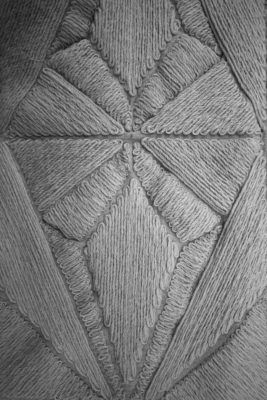
The intimacy is so powerful. It’s the most immediate and perhaps genuine way to communicate. People actually integrate the work into their lives, and they have to feel comfortable with it.
Is it difficult to talk about these processes that are so innate, so carnal?
Most of the time when I do interviews with the fashion press, they ask me about my inspirations, and I just have to blab on about nothing. How can you describe clothes? The thing about it is that it has to strike an emotional chord that’s a little bit magic and indefinable. If you can define it too easily, the magic is gone. There’s not much I can really tell someone else except all the peripheral matters surrounding the business of designing and selling clothes. I can’t explain myself. There’s nothing more tedious than a designer talking about his inspirations. As far as the process goes, that’s easy to talk about. In the beginning, I’ll drape fabric on a form, walk away, come back, walk away. It’s a long process for me, and I’m not quick enough to do it on a model. At some point, I transform this into a paper pattern, which is then manipulated on a table. It’s kind of the same thing with the furniture.
And in the end, what is a good form?
A good form is a rational line from point A to point B. A satisfyingly rational and graceful line will produce a good form. This goes for both furniture and clothes. Women’s clothes can definitely bear a little more frivolity and coquettishness. With men, I try to stay pretty severe. The history of uniforms is so well documented that we have a blueprint of what’s made a man look the most dignified—what’s been done to emphasize his integrity, his nobility. Uniforms have achieved this so well—why reinvent the wheel?
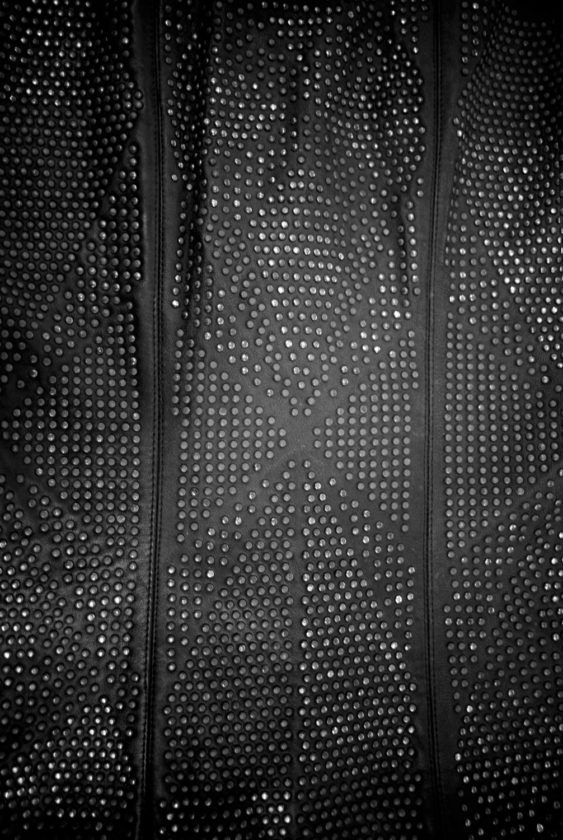
That you make this distinction between designing for men and women is interesting because you’ve made it a point in the past, on several occasions, to identify yourself as bisexual. The self-portraits you’ve taken for your photography book, L’Ai-Je Bien Descendu? [2008], include a double exposure of you urinating into your own mouth. And of course, there’s also the naked-Rick wax statue, which I want to talk about later. It seemed to me that “bi” was code for doubling the self. I like the photo of you wearing heels.
I’ve always proposed heels for men. I don’t mean them as feminizing, but more as a Kiss, heavy-metal kind of thing. It’s gender bending, but it’s like Marlene Dietrich wearing men’s suits to exaggerate her femininity. When Kiss wore heels, it was meant to challenge—“just try to call me feminine, motherfucker, I’ll kick your ass.” Frankly, in the beginning, I made a point of bringing up my sexuality just because I wanted to do it before anyone else could. I was with Michèle [Lamy], and hated the idea of someone whispering to her, “You know, I think your husband’s gay.” I was going to say it first. I didn’t want anyone to think they could embarrass me, or Michèle.
But the question of sexuality reaches something more fundamental as to what’s happening when a man designs clothing—visual signifiers—for women, and when a man designs for other men. Is it always a question of projection?
It’s tricky. There is so much mystery there, and it’s the mystery that makes the magic. If we knew the answers, there would be no magic. I will say that, with women, I’ve always resented how they’ve been objectified and made into dolls by gay designers. I don’t want them to be presented like a wedding cake. They realize, “Rick Owens is a man who actually likes me.” With my male models, I often choose these papery-thin, translucent, skinny, white creatures. I end up objectifying them, and I don’t know what that’s all about. [laughs] In retrospect, my favorite male models are the opposite of me. I’ve made myself quite muscular and fit into a certain stereotype, but I imagine my male model as this translucent jellyfish of a man who is totally unfuckable—what does that mean? I haven’t figured it out.
Let’s talk about your body in particular. You’ve made a full-scale, anatomically correct, wax statue of yourself, which now stands behind the cash register in your Paris store. Why did you do this?
It was meant originally as a personal exercise, and never for public display. In 2005, we had just bought our current house in Paris, which was a significant moment for me. I thought to myself, what does a man do when he reaches this point in his life? Traditionally, he’d commission a portrait to put over the mantel—a very lord-of-the-manor type thing. I wanted to do that, but instead of a portrait, I got a wax figure made. It’s also an exercise in vanity, as well as a creepy exercise in mortality—it infers that I’ve captured myself in a moment of glory, and everything after will be part of my decay. It’s poignant and tragic. Anyway, I got the mannequin made by a company in London that makes wax sculptures for museums and Madame Tussauds. It was sculpted, not made from a cast, so I had to go in for sittings for hours at a time. We took measurements with forceps, tons and tons of photographs, and from that, they came up with a rough bust—which was very realistic. It was an intense experience because the sculptor is touching your body, and touching the clay, and it becomes a very intimate relationship. The process was almost completely silent.
Did you feel scrutinized?

I’m not very shy. I think shyness is a form of vanity that’s silly. I didn’t feel intruded on or anything—I mean, I asked for it. I remember seeing it half completed, without hair, and I could see my mother and my father in ways that I haven’t seen in me before. It hit an emotional button to physically stand beside myself and witness this eternal cycle of generations in my features. Pitti Immagine—a men’s fashion tradeshow in Florence—invited me to make an installation, and I decided to show the statue there. I had always wanted the statue to urinate, like a fountain, so we had it rigged up with a pump. People obviously took it as me just trying to be provocative and puerile, which it was, but what most people didn’t understand was that I didn’t do it simply to provoke. I put it in the house afterwards, and it got old seeing it everyday. We were opening the Paris store around that time, and it turned out to be too beautiful. It needed a turd in it, so we put the mannequin there!
It’s nice how your presence is such a big part of the store. Are your wearers changing themselves by wearing your designs, or are you changing them? You’ve often described and portrayed women as nuns and priestesses. Do you imagine that the women who buy these clothes relate to these archetypes?
I’ve created caricatures. I want there to be a suggestion of discipline, rigor, discretion, modesty, and so I’ve created a caricature just to exaggerate an idea. It’s not about status or sex, but something more healthful than titillating. I’ve been doing lots of loincloths recently. I started a couple seasons ago because I hate mini-skirts, but I like showing a lot of leg. It looks active and free. The coy affectations that come with wearing mini-skirts—crossing your legs, hiking down the skirt when it rides up, sitting in a weird way suddenly makes everything about the vagina. It seems silly to me. Having said that, crotch emphasis done well, like with a pair of well-cut jeans, can be very appealing. It’s the coyness that bothers me, not the sexuality. I wanted my loincloths to express modesty, not vulnerability. Here, modesty still addresses the genitals, but it’s not provocative. It’s sensual but modest. It also has that bum-flap connotation from punk rock, which is always appealing. Having something swinging between your legs is appealing, like Scottish sporrans. I almost never use artwork for references, but there is this Degas painting of the young Spartans that shows beautiful, healthy, naked athletes. This very athletic kind of nudity is so great.
Is this why you work out?
I love the idea of self-invention, because what one sees is never entirely real. I’m very self-invented. I took steroids when I was young because I wasn’t very comfortable with my body and the way I looked. Sculpting oneself takes discipline and commitment, and I like to express these values. It’s all about control and loss of control. I’ve had a very cliché life. I had very controlling parents, and a very insulated childhood because I was an only child. But as soon as I could, I went out of control, and tried to see how out of control I could get. I ended up going a little too far, so I over corrected, went to the gym and got all healthy, stopped doing drugs, stopped drinking—I still smoke, which is the new, contemporary form of self-contradiction. Now it’s all about discipline. But this is cliché, no? This is Madonna’s life story. Self-invention is also about faux mysticism—like Led Zeppelin songs that are mystical without meaning anything. They’re charming and inspirational about wanting to be mystical. This mystical devotion goes back to what I was saying about the nuns. The idea that people band together for an idealistic goal, misguided or not—and more often than not, they are misguided, but the idea of group effort is moving. The fact that this often ends in disaster makes it even more so. Who can resist those stories of the Jonestown cult whose members committed mass suicide by drinking poisoned Kool-Aid? It’s fascinating how so many people can go so wrong together. There’s something so wonderfully creepy about it.
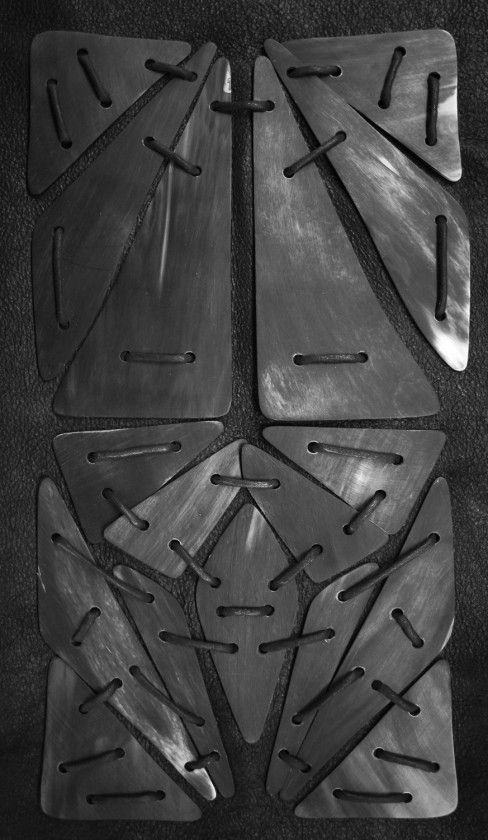
That’s like the story of America.
It’s also the story of the Nazis. They all felt like they had a really good idea, but how did so many people, collectively, take it that far?
Funny that you should mention the Nazis, because when you were waxing poetic just now on the nude, athletic body, I was thinking about the Nazis’ cult of the body, which fetishized the athletic physique. They had all these naked, young Aryan boys exercising together, in nature no less. There’s something so essential about this image in the way it strives for purity.
It’s creepy because it’s both pure and corrupt.
You’ve said that your clothes are an autobiography of your life. Expressing resistance through punk aesthetics and asymmetrical cuts made sense for you as the struggling, independent fashion designer living on Hollywood Boulevard. But the distressed leather jacket imagery persists in your work, even after you’ve found success.
It’s more about rebellion than anything else. I embrace the adolescent side in me. One rebels when life is tough, but also when life gets too prissy. It’s a reminder that you can always do whatever you want. It’s a reminder of past restrictions. Everyone feels forced in one way or another. Everyone relates to having to go to work, having responsibilities, having duties. I’m just expressing everybody’s fascination with their id. What if we just let go and did whatever we wanted? Everyone wants to know, because we’re intrigued when we see others do it. We’re all tempted to lose control. This is what I’m speaking to.
What are you rebelling against now?
I’m reacting against convention—and particularly convention within fashion. I was always irritated that radical fashion was just for the shows, and when designers would present women as decorated parade floats going down the runway, then show up in the end to bow wearing jeans and a T-shirt. These designers wouldn’t commit themselves to their own aesthetic, and I’m irritated every time I see it. They make a proposal, but they imply that it’s impossible for it to really happen. I believe that it’s possible to live your acid-trip all the time. It was hard when American Vogue offered me a show. My clothes were about anti-fashion, anti-display. How do I make a fashion show about that? I could do it once, maybe twice, but it’s a very narrow aesthetic.
So why did you do it?
Because it was offered to me, and because it was Vogue. It was one of those opportunities that I knew if I didn’t take, I would always think, “But what if I did it?” I definitely think I made some mistakes in the beginning, but it’s only in the past four years that I felt like I was putting across something that’s effective and accurate to what I want. I now feel I’m able to express what I want to in a convincing way. It’s a wonderful thing when one expresses oneself and receives a positive response. Like Oprah Winfrey says, everyone wants validation.
You’re validated now, so in a way, does it mean that you don’t need to do shows anymore? Why continue to follow the conventional, season-after-season rhythm of the industry?
There’s a formal pageantry one needs to adhere to in order to signify a desire to be part of a certain community. Fashion, when it reaches a certain level, is not so much about the merchandise anymore. Nicolas is getting it right—his shows for Balenciaga are about technical experimentation in clothing. This is a value he’s expressing through clothes, and he’s good at making modern, innovative, technical experiments. It doesn’t really have to do with what these pieces are like as wearables, but it’s brilliant in what it is.
How structured of a businessman are you, because now you’re really talking about marketing strategies? Did you have an idea from the beginning of how you wanted to market yourself?
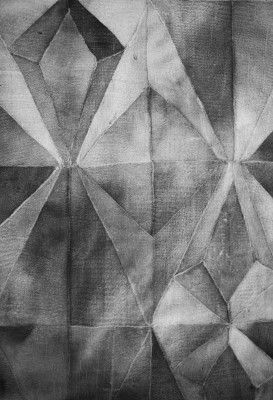
I knew I wanted to protect what I did, and the longer I was able to protect it, the longer it had a chance of surviving. I knew I wanted to keep it pure, and that I wanted it to have integrity, be genuine and personal, and I wanted to create an emotional connection to my wearers. I also knew that provocation doesn’t hurt. I liked doing a pissing statue. I like to say I can get away with doing shit like this. You do this, and there will be a certain amount of people cheering you on, “Fuck the system!” At the same time, I feel like I’m genuinely influencing the world in a way when I see people buying my clothes. I have affected their taste in a way, and changed the way they think. I infected, and it took. And there’s something satisfyingly hardcore about that.
What do you think of all the fashion designers whom your aesthetics have similarly infected?
I’m not responsible for what others do. I know that there’s been a lot of talk of how other designers have been copying me, and it’s really flattering, but I wouldn’t exist without Yohji Yamamoto or Anne Demeulemeester either. We all went through Kurt Cobain. Clothes are a combination of touchstones that we all recognize. I’ve just arranged them in my own personal way, but those touchstones are things that a whole generation recognizes. Other designers are rearranging them, too.
I remember looking around in COS [H&M’s affordable “high-fashion” line] not long ago, and seeing these super thin jersey tops with a single vertical seam down the middle of the back, appropriating what I would consider a signature Rick Owens cut.
I think it’s inevitable. I can’t hold onto something forever once it’s in the air. I don’t own this aesthetic, and it doesn’t bother me that it’s being appropriated.
Diane Pernet told met you have a special affinity for Richard Strauss’s opera Salome [1905]. The music was used as the soundtrack to the video portrait Nick Knight made of you, and there’s a decapitated head—your head—sitting in the London store!
The London store was very much inspired by Salome. It’s my favorite Strauss opera. That its libretto is based on Oscar Wilde’s rendition of the Bible story somehow made sense to do the London store with it in mind.
For his time, Strauss’s music was really out there.
Really out there! What I love is how refined the barbaric quality is in his music.
The irony dawned on me last night that the pivotal scene in Salome, the “Dance of the Seven Veils,” is a scene of undressing, a striptease. Somehow fashion, or clothing, seems even more powerful when removed. I feel like we’ve spoken so much about nudity and nakedness, and at its core, your interests seem to be developed from this primary state. So the beheaded person in Salome was the prophet—
I certainly don’t think of myself as a prophet! I have a lot to say, and a lot of it is probably wrong. I don’t want to come off sounding superior. I’m a flawed person trying to get through everything in as dignified a way as possible, just like everyone else. My favorite quality of the opera is that it defies convention, even today. What an extreme act of anti-conventionality. What delights me is that it’s so retardedly lurid. The story has no redeeming element at all. It’s just about sex, blood, and lust, and I love that. The scene where she’s kissing the severed head makes me cry every time. It’s almost supernaturally beautiful, and it just transcends. It’s basically a lurid story of a fifteen-year-old girl, stripping for her dad so that he would let her have her way with the preacher, and satisfy her dirty lust for him, beheading him, and then kissing his severed head—it’s just too delicious!
Interview by CARSON CHAN, Photography by OWENSCORP
Credits
- Interview: Carson Chan
- Photography: Max Farago and Rick Owens Corp
